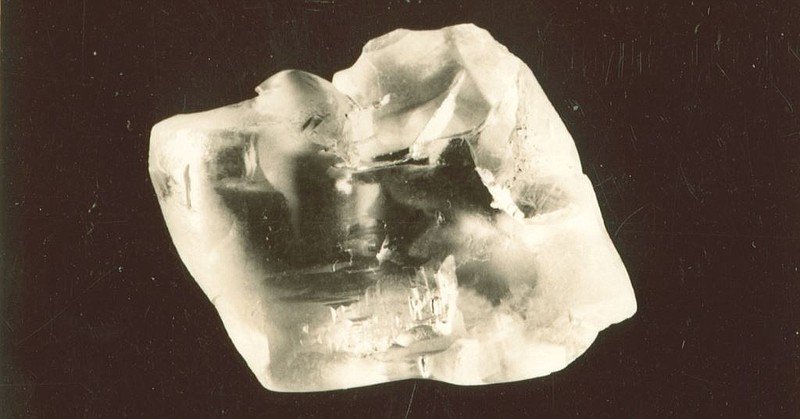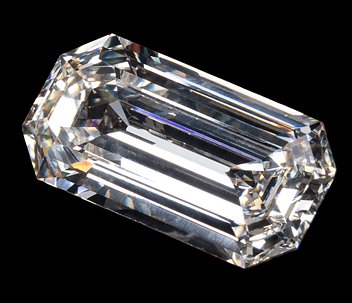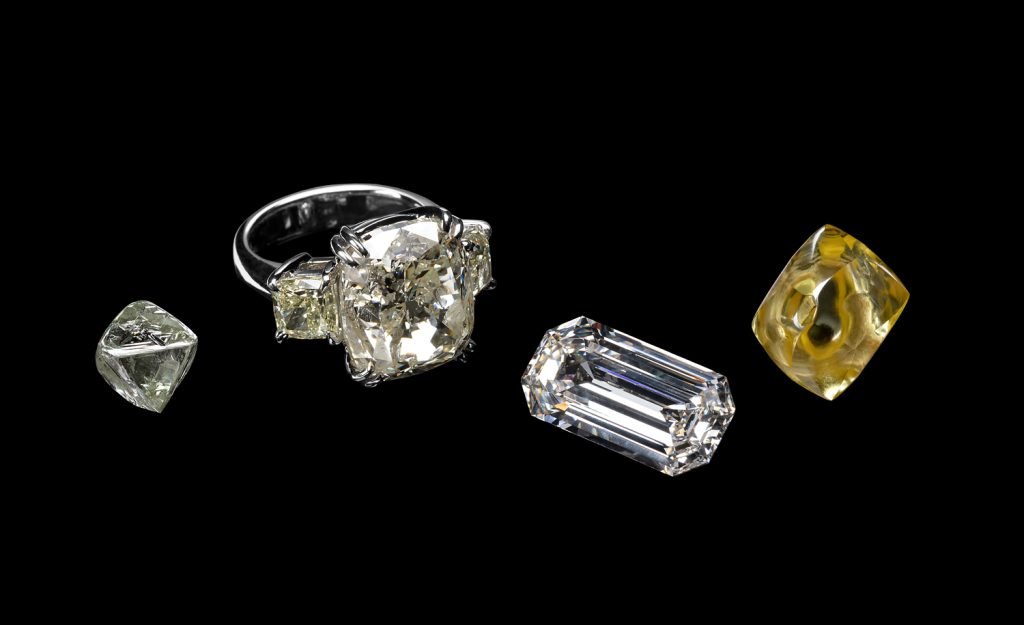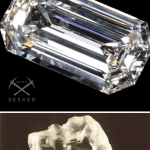The Uncle Sam Diamond
In 1924, Wesley O. Basham, a worker for the Arkansas Diamond Corporation, made a discovery that would change the course of his life forever. While using a high-pressure hose to wash diamond-bearing ore down long, wooden troughs, he spotted a brilliant flash that turned out to be a large diamond. The gem that would become known as the Uncle Sam Diamond was first named in honor of Basham, who was known as Uncle Sam in his hometown.
For decades, the Uncle Sam Diamond remained a prized possession, changing hands several times and ultimately finding its way into the National Gem Collection at the Smithsonian Institution. But in June 2022, the gem was unveiled to the public for the first time in more than four decades at the National Museum of Natural History in Washington, D.C. Visitors can now marvel at the beauty and history of this incredible diamond, as well as learn about the fascinating process of diamond mining in America.

A Rich History of Diamond Mining in Arkansas
The Crater of Diamonds State Park, where the Uncle Sam Diamond was found, has a long history of diamond mining in Arkansas. From 1919 to 1932, the Arkansas Diamond Corporation operated a commercial mine on the southern half of the park’s present diamond search area. The company used high-pressure hoses to wash diamond-bearing ore down long, wooden troughs to a plant, where the material was then sifted and sorted through a series of screens and pans. Most diamonds were small and easier to find once the soil and larger gravel had been removed. However, larger diamonds were sometimes seen earlier in the process.

Discovering the Uncle Sam Diamond
When Wesley O. Basham discovered the Uncle Sam Diamond in 1924, he knew he had found something special. The diamond weighed 40.23 carats uncut and had a light pinkish-brown color. It was later cut into a 14.34-carat parallelogram and a 12.42-carat emerald shape to improve its brilliancy. The cut diamond graded as M-color with very, very slight inclusions.
The Uncle Sam Diamond Changes Hands
After being cut by Ernest Schenck, a diamond cutter from New York, the Uncle Sam Diamond changed hands several times, with its owners recognizing its value and historical significance. B. Beryl Peikin, a New York jeweler, owned the diamond until his death in 1988, and his wife kept it until her death in 2015. In 2019, the diamond was sold to Dr. Peter Buck, cofounder of the Subway restaurant chain, who recognized its national importance and donated it to the Smithsonian Institution.
A National Treasure on Display
The Uncle Sam Diamond is now part of the Great American Diamonds Exhibit at the National Museum of Natural History in Washington, D.C. Visitors can see this amazing gem, which is nearly a century old and still as stunning as ever. The Uncle Sam Diamond and the Canary Diamond, an uncut, 17.86-carat yellow Arkansas diamond found in 1917, are both examples of the excellent quality of diamonds that can still be found at Crater of Diamonds State Park today.

Resources: Arkansas State Park website
- Online rock and mineral club for collectors of all levels!
- Find community with like-minded rock and mineral enthusiasts.
- Monthly Giveaways!
- Free Access to Entire Digital Library of Products (annual memberships)



